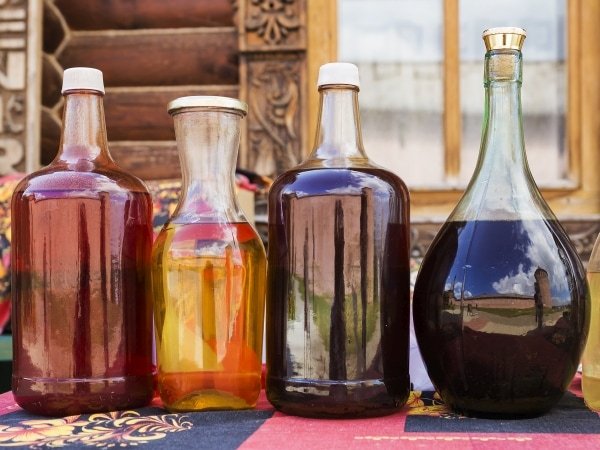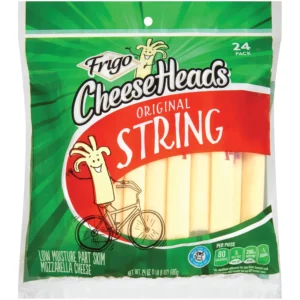When you open a bottle of something to drink and then leave it only halfway full, you can’t help but wonder how much longer it will stay fresh. And mead is not an exception to this rule, as this beverage that seems to be a cross between wine and beer can sometimes lead to misunderstandings.
Does mead go bad? Even though commercially produced mead does not technically spoil, its flavor will gradually deteriorate over time to the point where it is no longer pleasant enough to be consumed. It has a shelf life of several years if it has not been opened, and it can keep its best flavor even after being opened for several months. If it gets contaminated, home-brewed mead runs the risk of going bad.
This article will teach you how to store mead properly and how to determine whether or not it is still drinkable after a certain amount of time has passed.
What exactly is mead?
You may have seen people from the middle ages drinking mead in movies, but you probably never tried it for yourself because you aren’t familiar with what mead actually is.
Honey is fermented into a wine-like beverage called mead. Mead is made from honey. The combination of water and honey is subjected to fermentation thanks to the addition of yeast to the mixture. You could come across mead flavored with a wide variety of ingredients, ranging from fruits to spices.
If you were to ask people who consume mead to describe the beverage, the majority of them would say that it is a hybrid of beer and wine. The alcohol percentage in the mead can range anywhere from 6% all the way up to 20%.
Traditional meads typically have an alcohol content that is fairly high, ranging anywhere from 15 to 20 percent. The alcohol content of lighter meads ranges from 6 to 12 percent, making them an excellent choice for individuals who do not enjoy drinking strong alcoholic beverages.
Even if you don’t think the percentage of alcohol in the mead you’re drinking makes a difference to your experience, we suggest that you check it anyway. The higher the percentage of alcohol in the mead, the longer it will keep after being opened.
Does Mead Go Bad?
The quality of commercially produced mead gradually declines until it reaches a point where it is no longer desirable to consume it, similar to the way that kahlua and prosecco can remain drinkable for a considerable amount of time after they have gone bad.
Unopened bottles of commercial mead have a shelf life of years at the very least, and oftentimes much longer than that. After being opened, its optimal flavor and freshness can be preserved for anywhere from a few days (in the case of lighter mead) to several months (in the case of classic mead).
Home-brewed mead, on the other hand, has a greater risk of going bad. Mead must first be fermented using yeast, and there is a risk that the beverage could become contaminated during the process. Mold can develop on it, just like it can on many other foods and drinks.
Even though this is theoretically possible with commercial meads, the fact that these meads are typically well-preserved and come in airtight containers means that they do not quickly or easily go bad.
It is difficult to estimate how long your home-made mead will stay fresh, but the manner in which it is prepared and kept will most likely make a significant difference. Homemade mead needs to be stored in a container that won’t let air in. The more times you open it, the sooner you can reasonably expect it to become spoiled, either in terms of taste or in terms of being safe to drink.
If you store your mead correctly, regardless of whether or not the bottle has been opened, you will be able to ensure that it has the longest possible shelf life.
Is it True that Old Mead Tastes Better?
Traditional meads that are stored in bottles sealed with natural corks have the potential to improve with age. It is important to remember to store classic mead on its side if you intend to let it age for some time. This will stop the cork from becoming dry and brittle.
It is important to keep in mind that not all meads that are packaged with a natural cork are suitable for aging. It is possible that your attempt to age classic mead will be unsuccessful if the cork you use is not of sufficient quality and the bottle you use was not created specifically for the aging process.
We suggest that you check the manufacturer’s guidelines in order to determine whether or not the specific variety of mead that you have purchased can be aged and how you should age it if it can be.
In the event that the mead is not suitable for aging, you will find that the process has the opposite of the desired effect. After some time has passed, the beverage will have a lower quality. When you open the bottle, you will discover that the mead has a less desirable flavor than it did when you first tried it.
How long can mead be stored for?
Invest in a traditional mead with an alcohol content of 15 to 20 percent if you want a beverage that will continue to deliver the best flavor over the course of many months or even years.
If you are the type of person who finishes a bottle of mead just a few days after opening it, you should stick to lighter styles.
Therefore, here is how long traditional meads and lighter varieties last:
Classic meads that have not been opened have a very long shelf life. When properly stored, traditional mead has a shelf life of at least five years and often much longer. Unopened bottles of traditional mead don’t need to be stored in the refrigerator unless your home is extremely warm.
If you store a bottle of traditional mead in the pantry after it has been opened, you should consume it within 6 months; however, if you store it in the refrigerator, you should consume it within 8 months.
Drinking the mead as soon as you get it will provide you with the best possible flavor experience. After being opened, the flavor of the beverage will gradually become less appetizing regardless of whether it is kept in the refrigerator or at room temperature.
The shelf life of lighter meads is typically shorter. When purchasing light meads, it is essential to check the “best by” date that is printed on the bottle of the product. The shelf life of unopened light mead is only six months after the date printed on the bottle.
After you’ve cracked open the bottle of light mead, you should try to drink it as quickly as you can. If you want to enjoy the flavor of certain brands of mead to its fullest, you need to consume it within a day of purchasing it. However, you should try to drink light meads within seven days of opening the bottle at the very latest.
In any event, it is important to check the date that is printed on the bottle of mead and to read the recommendations that the manufacturer has given regarding the conditions in which the drink should be stored.
What Are Some Ways to Determine If Mead Has Gone Bad?
In contrast to many other products, mead is not likely to go bad over time. The majority of the time, the quality simply declines over time, to the point where you will eventually no longer want to consume it.
If you are unsure as to whether or not the mead can still be consumed, look for the following signs:
- Check for a rancid odor before you consume mead that has been stored in your refrigerator for some time. Give it a whiff before you drink it. Throw out the bottle of mead and start fresh with a new one if you notice an odd or rancid smell.
- Changes in color If the bottle of the mead is a dark color, pour a small amount of the drink into a glass to determine whether or not the beverage has experienced any color changes. The cloudiness of the mead is another sign that it should not be consumed anymore because it is no longer fit for human consumption.
- Changes in flavor: If the mead seems to have a pleasant aroma and appearance, you should give it a taste to determine whether or not it is suitable for drinking. It’s possible that an opened bottle of mead that’s been sitting in the fridge or pantry for a while won’t taste as good as fresh mead. You are however free to consume the mead without risk if there have been no discernible alterations to its flavor.
When it comes to homemade mead, you should toss it out if it becomes contaminated. If you are not an experienced brewer, it can be difficult to determine whether or not a batch of mead is contaminated.
A pellicle that has formed on the surface of the brew is an indication that the mead has been contaminated. There may be a variety of different shaped pellicle formations on the surface of the brew. On the surface, there might be a number of bubble-like spots that have formed.
Be sure to keep in mind that these two key common sights are not indications that the mead is contaminated or spoiled:
- If this is your first time making mead at home, you might be concerned that the frothy coating on the surface of the mead is an indication that it is contaminated. This is just a bogus warning. The foam is a result of fermentation that is taking place within the mixture.
- It is not at all unusual for mead to accumulate sediment at the base of the bottle as the beverage ages. A completely good mead will also have sediment at the bottom of the brewing container after it has finished fermenting. If you don’t notice any other signs of spoilage, it is safe to consume the mead that has some sediment at the bottom of the bottle as long as there is no other sign of deterioration.
How Should Mead Be Stored?
The proper conditions for storing mead are often misunderstood due to the fact that it is comparable to beer, wine, and, contrary to popular belief, cider. The following is an explanation of how mead should be stored.
To begin, if you have a bottle of mead that has not yet been opened, you should keep it in a cool and dry place. It is essential that you store the bottle of mead somewhere that is shielded from direct sunlight. Even though some manufacturers package their mead in dark bottles, this does not offer a foolproof defense against the effects of sunlight.
As long as the bottles of mead have not been opened, you can store them in any room or cabinet as long as they meet the criteria listed above. When a bottle has been opened, placing it in the refrigerator immediately after opening it helps to preserve the flavor and keeps mold and infection at bay.
These are the fundamental guidelines that apply to all varieties of mead.
Should Honey Wine Be Kept in the Refrigerator?
It is not necessary to refrigerate mead in bottles that have not been opened. It is sufficient to store the bottles in a cool and dry location so long as the cork or the cap has not been compromised for the purpose of ensuring that the beverages retain their finest qualities.
You are able to refrigerate opened meads, and in the case of light meads, this is something that you should absolutely do.
To provide a bit more context, the following is an explanation of how to store classic and light meads, depending on whether or not they have been opened:
1. Putting Away Traditional Mead
As was just mentioned, traditional meads typically have a higher percentage of alcohol by volume. Because of this, they will have a longer lifespan. Because of this, if you go to the grocery store and find that they are selling traditional meads, you should definitely buy several bottles of them because they have a good shelf life.
After they have been opened, traditional meads should be stored in a pantry or cabinet where it is cool and dark. Even if it is not refrigerated, mead that has a high percentage of alcohol can be stored successfully for a long time as long as the bottle is tightly sealed.
There is no need for concern if the temperature where you live is high and you are unable to locate a location with a cool environment in which to store an opened bottle of traditional mead. It is also possible to keep it in the refrigerator. Putting traditional mead in the refrigerator will help maintain the drink’s freshness for a longer period of time.
If you are aware that you will not be able to finish the bottle of traditional mead within the next three months, it is recommended that you refrigerate it while it is still half full.
2. Putting Away the Light Mead
Light mead is more susceptible to spoilage when compared to dark mead because it contains a lower percentage of alcohol. Therefore, the refrigerator is the ideal storage location for a bottle of light mead that has been opened.
Keep the bottle tightly sealed at all times, especially if you are working with a sparkling variety, as this will help prevent any unwanted evaporation.
However, up until the point where you actually use it, you should store it in a cool, dark place, such as a cabinet or a pantry.


